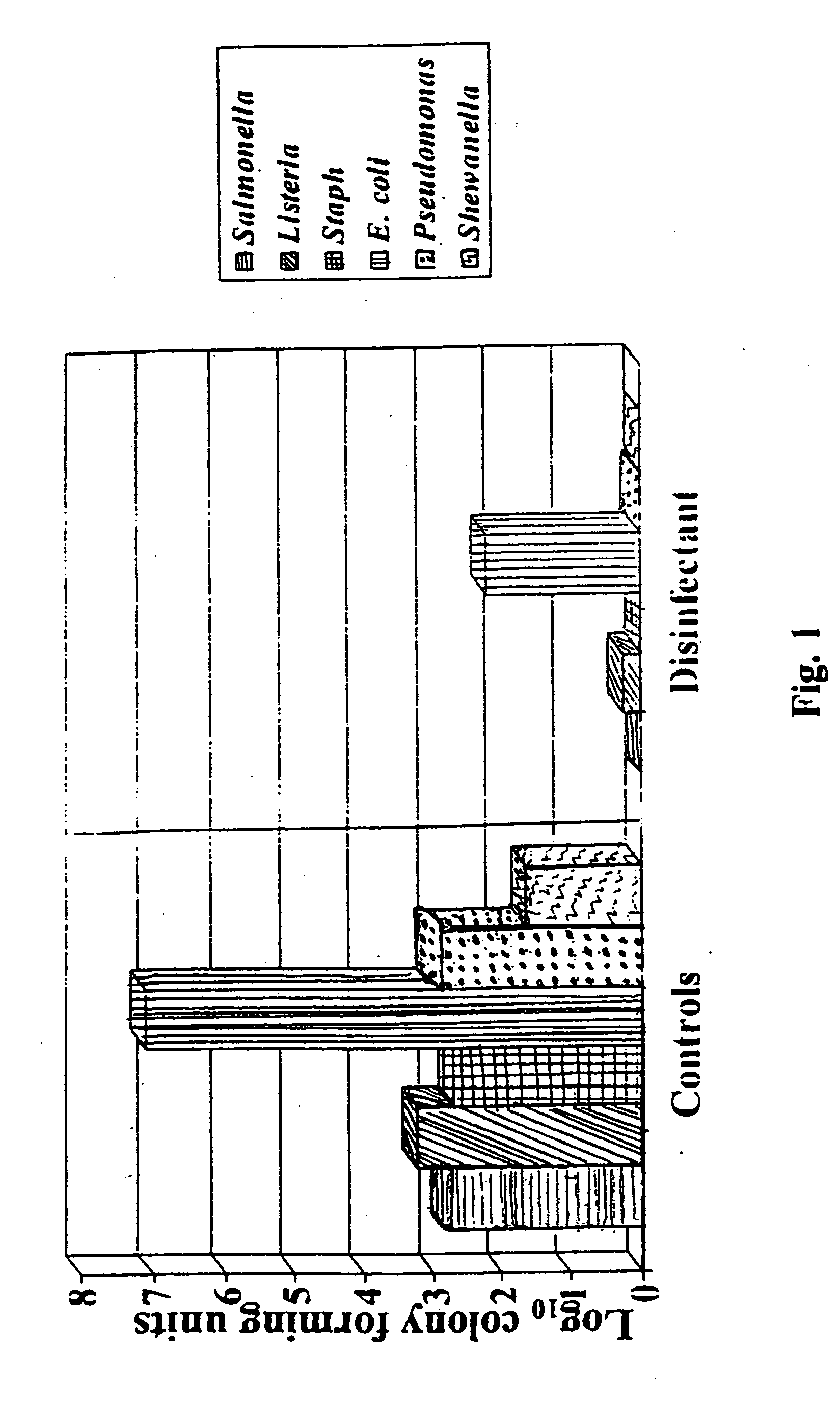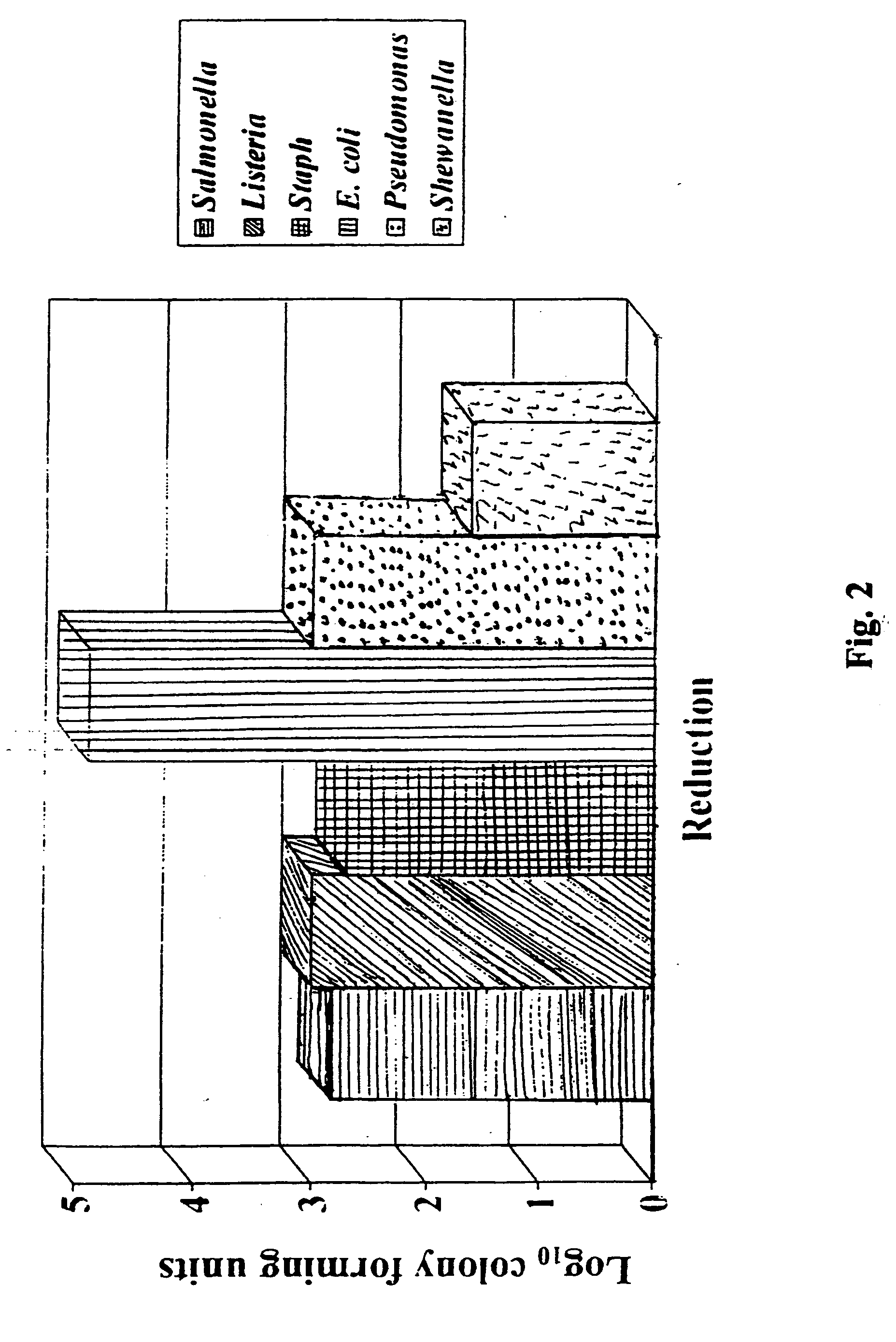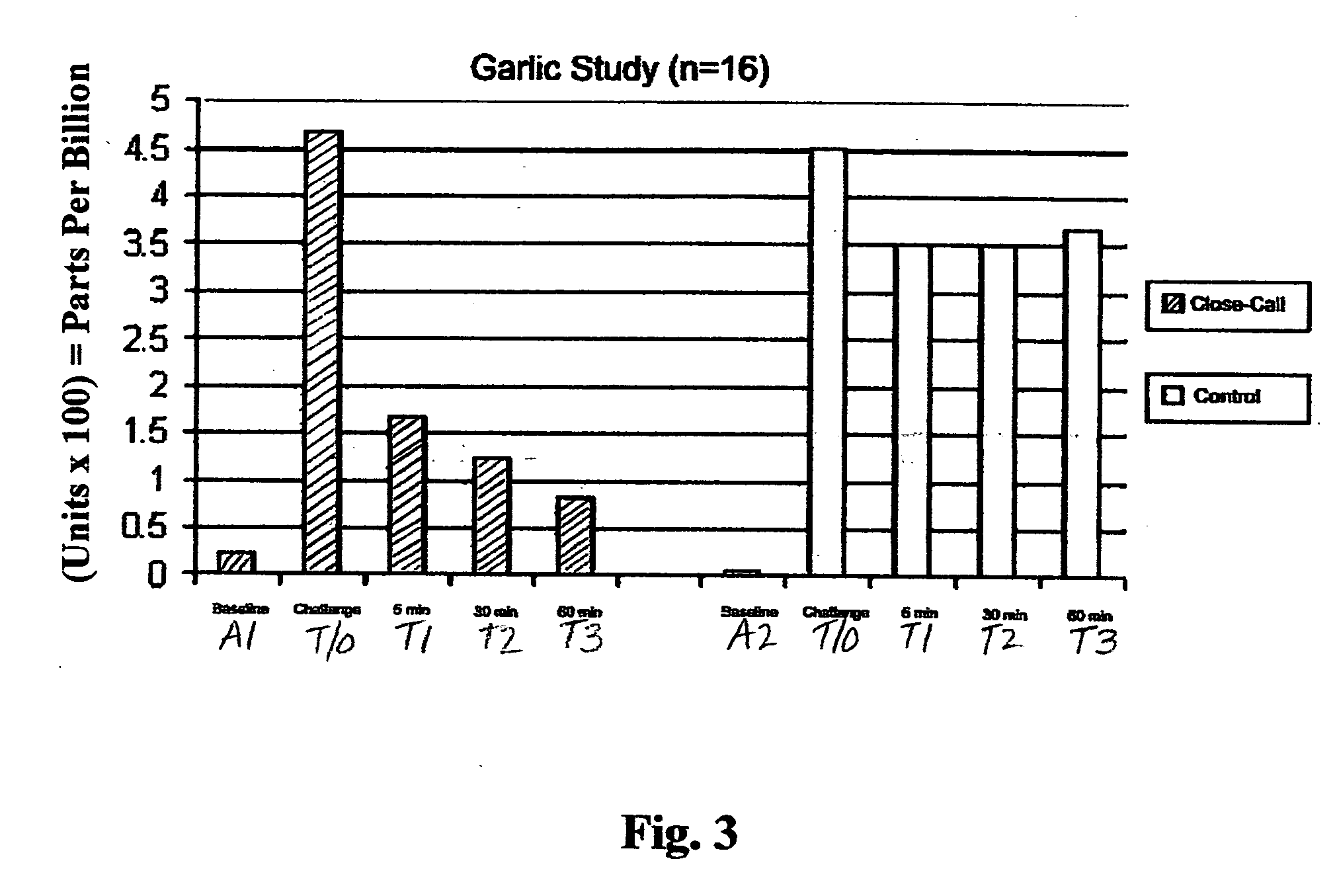Oral health care drink and method for reducing malodors
a technology for oral health care and malodor, applied in the field of oral health care drink and method for reducing malodor, can solve the problems of embarrassing oral malodor, halitosis, and most people's bad breath, and achieve the effects of not long-lasting, not easy to recur, and easy to recur
- Summary
- Abstract
- Description
- Claims
- Application Information
AI Technical Summary
Benefits of technology
Problems solved by technology
Method used
Image
Examples
example 1
[0057] In processing plants for poultry and animal products, it is customary to use various water treatment processes, such as a scalding tank, spray bath, final rinse and chill water tank. The scalding tank is used to dip poultry prior to the removal of feathers; other animals are dipped to remove the outer coating of fur or hair. The scalding process permits cross contamination and spread of pathogens. It is important for the safety of the human food supply to provide an additive that can be used in water treatments to inhibit the growth and spread of pathogens and deleterious bacteria. The ideal additive would not evaporate at boiling point temperatures, would not be destroyed by high temperatures and would not be bound by organic material, such as blood and feces and rendered useless.
[0058] The effect of PHB0020 on pathogenic, indicator, and spoilage populations of bacteria associated with broiler chicken carcasses in a poultry scald water application is determined in one embod...
example 2
Garlic Study
[0075] Sixteen subjects were each given one (1) peeled, raw garlic clove to eat. After a three minute incubation period, wherein each subject kept his or her mouth closed, the first reading was taken at time equals zero (T / 0). After the reading at T / 0, eight subjects were given Close Call with instructions to thoroughly rinse the mouth cavity and then swallow the Close Call liquid; the other eight subjects were given the placebo, without PHB0020, and were instructed to thoroughly rinse the mouth cavity, and then swallow the placebo. The reduction in breath odors as assessed by the Halimeter® organoleptic test is shown in FIG. 3.
[0076] In FIG. 3, the baseline reading A1 and A2 of the Halimeter® sensor is taken for sixteen subjects with clean, fresh breath; the Halimeter® readings are approximately 20 ppb for A1 and approximately 5 ppb for A2. The threshold for objectionable breath begins in a range from approximately 150 ppb to approximately 180 ppb. FIG. 3 shows the me...
example 3
Onion Study
[0078] Eighteen subjects were given one (1) teaspoon of peeled, chopped raw onion to eat. After eating the onion, all subjects were given instructions to keep their mouth closed for three minutes to allow for the incubation of the onion odor. After the three minute incubation period, nine subjects were given instructions to thoroughly rinse the mouth cavity and then swallow the Close Call liquid; nine subjects were given the placebo, without PHB0020, and were instructed to thoroughly rinse the mouth cavity, and then swallow the placebo. The reduction in breath odors as assessed by the organoleptic test is shown in FIG. 4.
[0079] Each subject began the study with clean, fresh breath. The baseline reading A1 and A2 of the Halimeter® sensor are approximately 30 ppb for A1 and approximately 50 ppb for A2. The threshold for objectionable breath begins in a range from approximately 150 ppb to approximately 180 ppb. FIG. 4 shows the measurement at T / 0 after the ingestion of oni...
PUM
| Property | Measurement | Unit |
|---|---|---|
| Time | aaaaa | aaaaa |
| Metallic bond | aaaaa | aaaaa |
Abstract
Description
Claims
Application Information
 Login to View More
Login to View More - R&D
- Intellectual Property
- Life Sciences
- Materials
- Tech Scout
- Unparalleled Data Quality
- Higher Quality Content
- 60% Fewer Hallucinations
Browse by: Latest US Patents, China's latest patents, Technical Efficacy Thesaurus, Application Domain, Technology Topic, Popular Technical Reports.
© 2025 PatSnap. All rights reserved.Legal|Privacy policy|Modern Slavery Act Transparency Statement|Sitemap|About US| Contact US: help@patsnap.com



